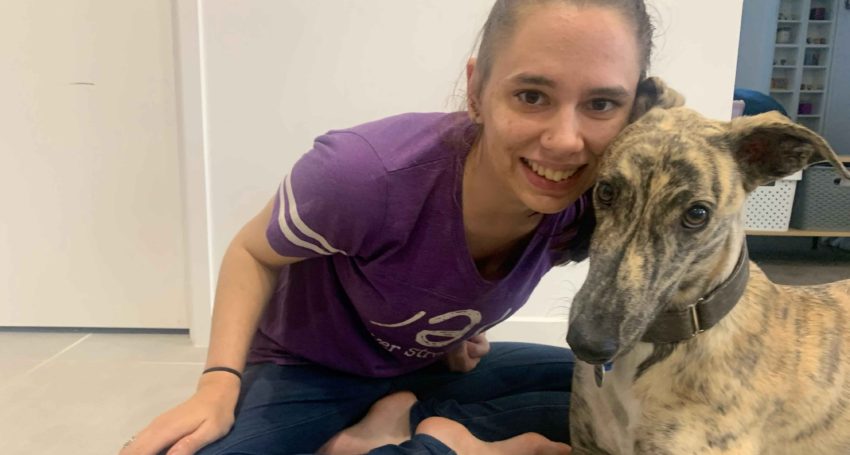How to create a safe and welcoming space for autistic people to worship and serve
Features
“As an autistic person, I experience many sensory sensitivities on a daily basis. Difficulties with sensory processing are a common occurrence for autistic people. Every autistic person I’ve met has sensory processing difficulties. And, as a speech pathologist working with autistic clients, I’ve met a lot of autistic people,” says Parish of Freshwater member, Mel Maddox, while offering tips for creating a safe space for autistic people to worship and serve

I had just come back to church after a few weeks of not going because I had been unwell. I was really anxious about returning. My anxiety is always worse when I haven’t been somewhere for a while. Luckily, I had my trusty assistance dog, Dobby, with me to help keep me grounded and prevent well-meaning parishioners getting too physically close to me by moving between me and others.
Advertisement
I’m one of the peculiar people who actually likes the COVID-19 1.5m physical distancing rule. It means people can’t get too close to me. When people get too close me, I can get really anxious. Depending on the sort of day I’m having, I can even come close to having a panic attack. When people touch me, again depending on how I’m feeling, it can range from feeling physically painful to causing a panic attack.
As an autistic person, I experience many sensory sensitivities on a daily basis. Difficulties with sensory processing are a common occurrence for autistic people. Every autistic person I’ve met has sensory processing difficulties. And, as a speech pathologist working with autistic clients, I’ve met a lot of autistic people.
At times, coming to church can be a sensory nightmare for me. Noise from singing and instruments can hurt. Being around a lot of people can feel suffocating. Trying to have conversations with people during fellowship following a high level of sensory input can be extremely challenging as well. It can sometimes appear like I’m not listening or really paying attention, especially if I ask you to repeat what you are saying a lot. But I’m actually just trying to process all of the information.
Related Story
 Features
Features
Tips when talking to people with Asperger’s Syndrome
The thing with sensory processing issues is that my brain can’t discriminate between the important sensory input (such as the conversation I’m having) and unimportant input (such as the band practising, other conversations, chairs being shifted and people moving around). It can be very overwhelming and feel like it is all coming at me.
Autism Spectrum Australia defines “autism” as:
“…a condition that affects how a person thinks, feels, interacts with others, and experiences their environment. It is a lifelong disability that starts when a person is born and stays with them into old age. Every autistic person is different to every other. This is why autism is described as a ‘spectrum’.”
It’s really important that parishioners are openminded, as well as welcoming. Not every autistic person is the same. As the saying goes, “If you’ve met one autistic person, you’ve met one autistic person”.
Being “inclusive” to autistic people doesn’t mean having a separate “low sensory” service for them. It means understanding that autistic parishioners have different sensory needs, so sometimes they might intentionally stand outside or opt not to participate in the passing of the peace. They may openly “stim”, as many autistic people engage in “self-stimulatory behaviour” to help regulate emotions. Stimming can include hand flapping, hair twirling, fidgeting, jumping or vocal stims (such as throat clearing or other noises that are calming for the autistic person). Some autistic people may have an assistance dog or they may have trouble following conversational “rules”.
Many autistic people and their loved ones are okay with being asked how you can best support an autistic person or about their sensory sensitivities. The more others are willing to learn, the better it is for people like me.
5 top tips for creating a safe and welcoming space for autistic people to worship and serve
- Offer seating options and ask the person what things would make seating more comfortable. For example, I sit on the floor a lot. Some parishioners might like a cushion for hard and uncomfortable pews. Also, acknowledging and accepting that an autistic person may not want to sit next to other parishioners and allowing additional space can also help.
- Provide quieter and calmer spaces for viewing and listening to the service. Sometimes being inside the church can be overwhelming, so having spaces outside, with a screen and speakers with volume control access, so autistic people can engage with the service away from the overwhelming environment can be very helpful.
- Respect that an assistance dog is on duty, as you would for a vision impaired person, so resist the urge to pat or otherwise engage with the dog. If an assistance dog is distracted, they can’t perform their job, and may miss an alert, potentially putting the handler in danger. Always ask if you want to pat an assistance dog and don’t take offence if the handler refuses, as the dog is there to help the handler.
- Be sensitive about an autistic parishioner’s need for personal space by being welcoming and friendly in ways they are comfortable with (such as with a big smile and saying “welcome back” rather than hugging the person). If you aren’t sure, it’s okay to ask!
- Ask how the parishioner would like to participate further or volunteer, making sure they know there is no obligation to do so. They might be really good with tech, and want to get involved in that. They may want to be involved with the band or kids’ church. Autistic people don’t always know how to ask or even whom to ask to get involved, so even letting them know if there is a specific person to approach if they ever want to volunteer is helpful.





